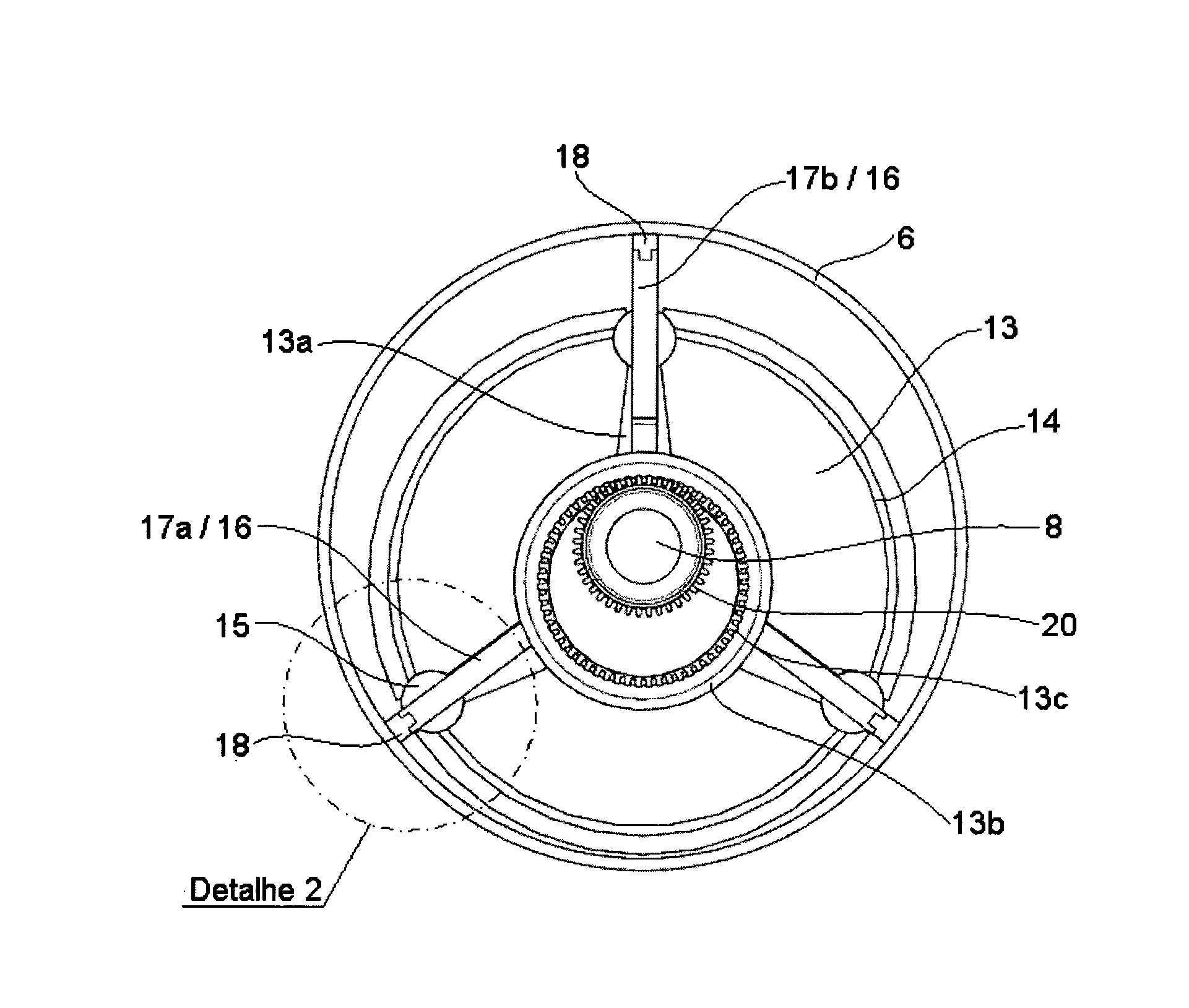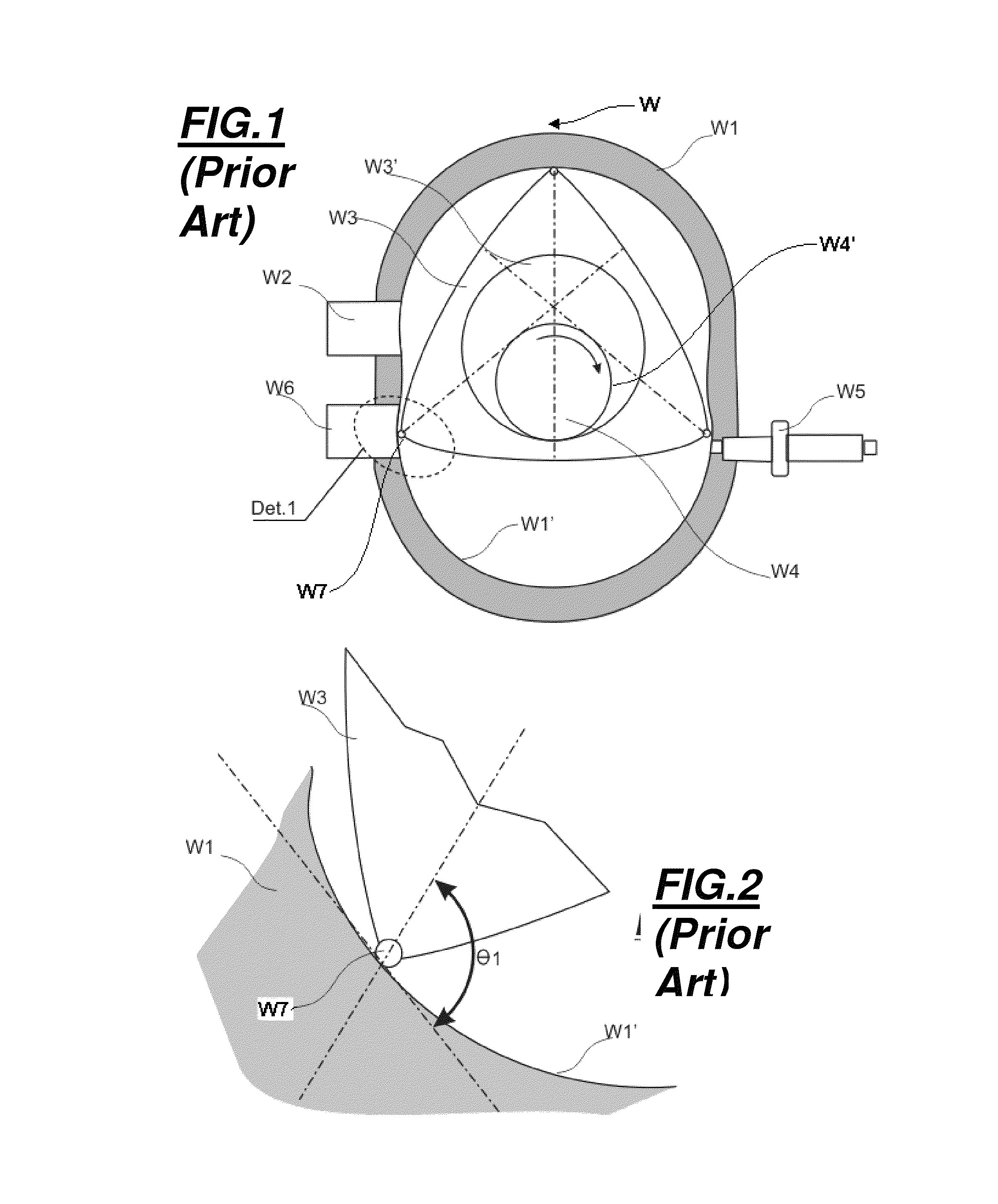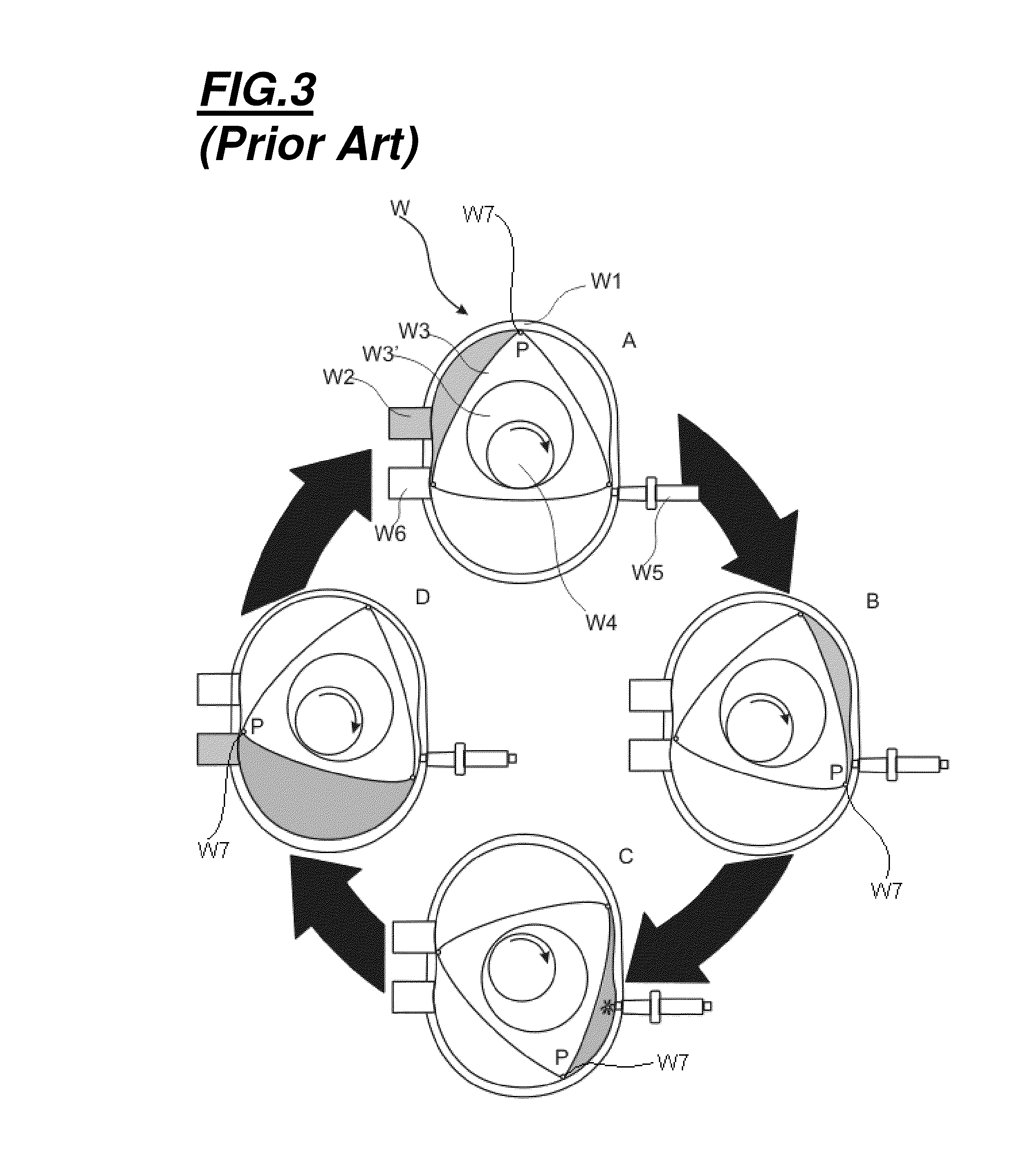Rotary internal combustion engine
a technology of internal combustion engine and piston engine, which is applied in the direction of rotary piston engine, rotary or oscillating piston engine, engine lubrication, etc., to achieve the effects of improved general performance of the engine, excellent sealing, and distinct durability
- Summary
- Abstract
- Description
- Claims
- Application Information
AI Technical Summary
Benefits of technology
Problems solved by technology
Method used
Image
Examples
Embodiment Construction
[0071]A Wankel engine is presented in FIGS. 1 to 3. With reference to FIG. 1, the Wankel engine (W) has a jacket (W1), which describes a cavity (W1′) with an approximate figure 8-shape, which presents in its body an access (W2) for the air / combustible mixture and an access (W6) for the exhaust gases, as well as a spark plug (W5). In the interior of cavity (W1′) is assembled a triangular rotor (W3) that has an internal cavity (W3′), mainly a toothed cavity (the teeth are not represented), which interacts with the static toothed segment (W4′) (the teeth are not represented) of a rotation axis (W4) of crankshaft type. Additionally, on the edges of the triangular rotor (W3) sealing elements (W7) are assembled.
[0072]The deficient aspect of the Wankel rotary engine (W) is that when the triangular rotor (W3) describes a rotation movement in relation to the rotation axis (W4), the tangency between the sealing element (W7) and the wall of the cavity (W1′), has an angle (Θ1) that is oblique a...
PUM
 Login to View More
Login to View More Abstract
Description
Claims
Application Information
 Login to View More
Login to View More - R&D
- Intellectual Property
- Life Sciences
- Materials
- Tech Scout
- Unparalleled Data Quality
- Higher Quality Content
- 60% Fewer Hallucinations
Browse by: Latest US Patents, China's latest patents, Technical Efficacy Thesaurus, Application Domain, Technology Topic, Popular Technical Reports.
© 2025 PatSnap. All rights reserved.Legal|Privacy policy|Modern Slavery Act Transparency Statement|Sitemap|About US| Contact US: help@patsnap.com



